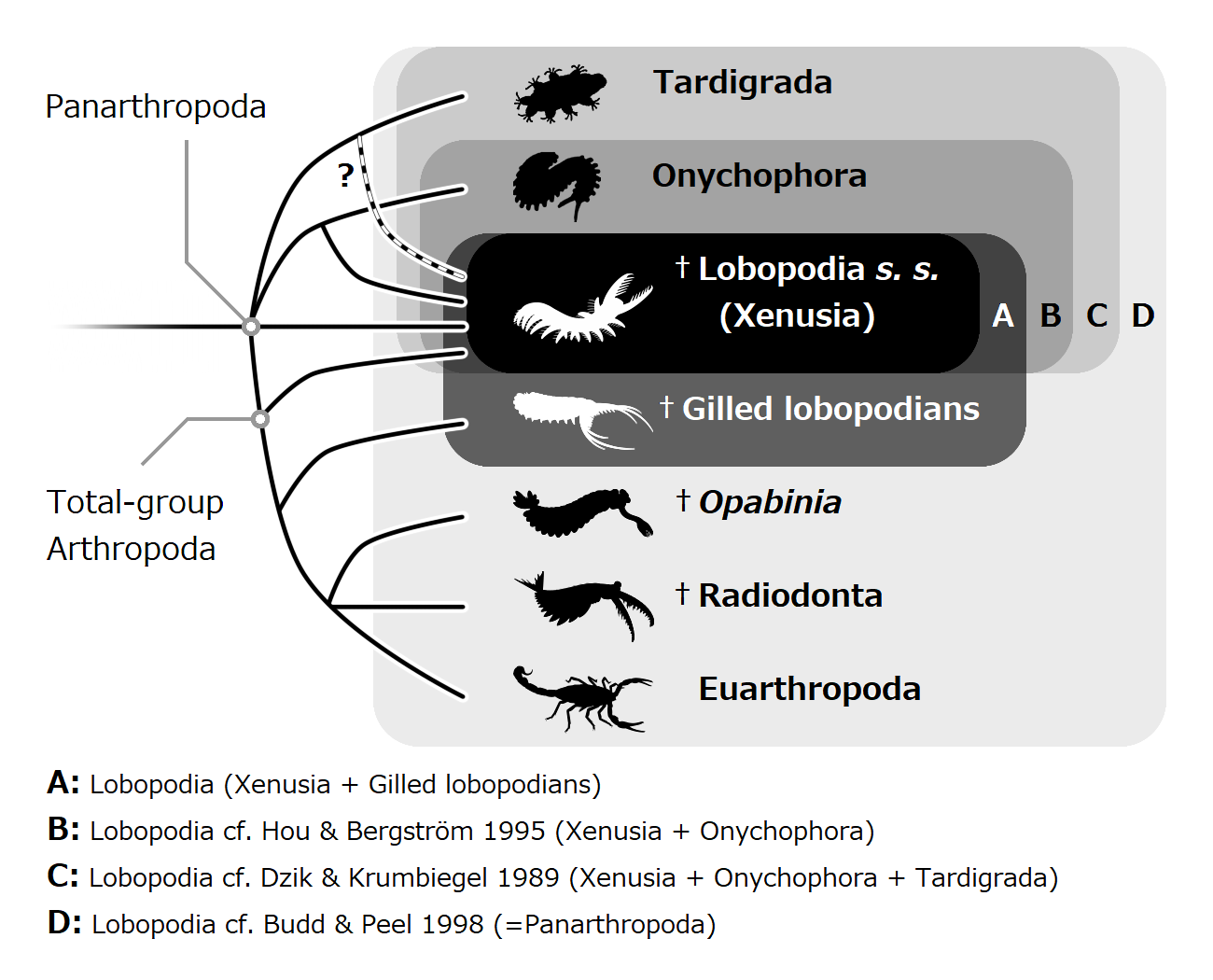|
Orstenotubulus
''Orstenotubulus'' is a genus of lobopodian known from Orsten The Orsten fauna are fossilized organisms preserved in the Orsten lagerstätten of Cambrian (Late Miaolingian to Furongian) rocks, notably at Kinnekulle and on the island of Öland, all in Sweden. The initial site, discovered in 1975 by Klaus Mül ... deposits of the latest 'middle' Cambrian (Miaolingian).Maas A, Waloszek D. 2001. Cambrian derivatives of the early arthropod stem lineage, pentastomids, tardigrades and lobopodians – an ‘Orsten’ perspective. Zoologischer Anzeiger 240: 451–459. It is believed by some to be an ancestor of the Tardigrades. Morphology Orstenotubulus was a Mid Cambrian lobopodian. It had an elongated, thin body with pairs of dorsal spines running down the entire top of the body. It also had tiny retractable spines ventral to the leg surface. Orstenotubulus would have crawled along the sea floor like most other lobopodians, using its dorsal spines to deter any predators. References ... [...More Info...] [...Related Items...] OR: [Wikipedia] [Google] [Baidu] |
Orsten
The Orsten fauna are fossilized organisms preserved in the Orsten lagerstätten of Cambrian (Late Miaolingian to Furongian) rocks, notably at Kinnekulle and on the island of Öland, all in Sweden. The initial site, discovered in 1975 by Klaus Müller and his assistants, exceptionally preserves soft-bodied organisms, and their larvae, who are preserved uncompacted in three dimensions. The fossils are phosphatized and silicified, thus the delicate chitinous cuticle and soft parts are not affected by acids, which act upon the limestone nodules within which the fossils have survived. Acids dissolve the limestone, revealing the microfossils in a recovery process called "acid etching". To recover the fossils, more than one and a half tons of Orsten limestone have been dissolved in acid, originally in a specifically designed laboratory in Bonn, more recently moved to Ulm. The insoluble residue is scanned by electron microscope. The phosphorus used to replace the fossils with calciu ... [...More Info...] [...Related Items...] OR: [Wikipedia] [Google] [Baidu] |
Lobopodia
The lobopodians, members of the informal group Lobopodia (from the Greek, meaning "blunt feet"), or the formally erected phylum Lobopoda Cavalier-Smith (1998), are panarthropods with stubby legs called lobopods, a term which may also be used as a common name of this group as well. While the definition of lobopodians may differ between literatures, it usually refers to a group of soft-bodied, worm-like fossil panarthropods such as ''Aysheaia'' and ''Hallucigenia''. The oldest near-complete fossil lobopodians date to the Lower Cambrian; some are also known from Ordovician, Silurian and Carboniferous Lagerstätten. Some bear toughened claws, plates or spines, which are commonly preserved as carbonaceous or mineralized microfossils in Cambrian strata. The grouping is considered to be paraphyletic, as the three living panarthropod groups (Arthropoda, Tardigrada and Onychophora) are thought to have evolved from lobopodian ancestors. Definitions The Lobopodian concept varies from ... [...More Info...] [...Related Items...] OR: [Wikipedia] [Google] [Baidu] |

